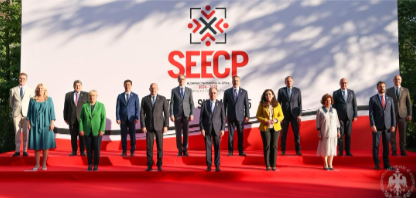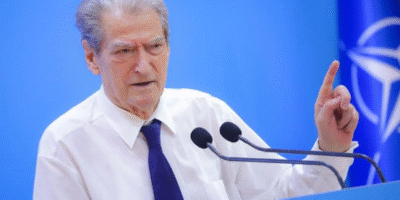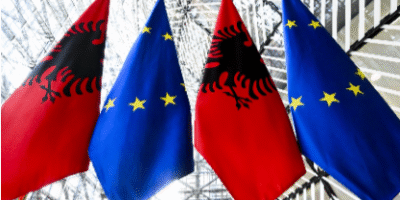The 2025 South-East European Cooperation Process (SEECP) Summit, hosted in Tirana, was meant to highlight Albania’s successful year-long presidency and promote regional unity. Instead, it exposed deep political divides between Balkan countries, revealing how unresolved post-Yugoslav tensions, differing global alignments, and stalled EU aspirations continue to shape the region’s future.
The summit’s joint declaration—endorsed by 11 out of 13 member states—focused on regional cooperation, support for EU integration, and alignment with Western positions on global security. Yet Serbia and Bosnia and Herzegovina declined to sign it. While their refusal was procedural on the surface, it underscored more complex issues. Serbia continues to walk a fine line between its EU ambitions and long- standing alliances with Russia and, increasingly, Iran. Bosnia’s stance reflects internal divisions, particularly the influence of Republika Srpska, which often mirrors Serbia’s position.
Albanian President Bajram Begaj acknowledged the disagreement but framed the
outcome optimistically, noting that most states did support the declaration. Still, the lack of full consensus weakened the summit’s symbolic goal of unity.
Tensions escalated when Kosovo President Vjosa Osmani pushed for the inclusion of a paragraph urging the EU to lift sanctions on Kosovo. The original draft had not mentioned the issue, prompting Osmani to demand action. Serbia opposed the move, reigniting familiar tensions.
“It is unacceptable that a regional forum claiming to promote cooperation ignores punitive measures against one of its members,” Osmani stated, calling Serbia’s objection predictable. The moment reflected more than a Kosovo-Serbia dispute—it highlighted the EU’s decreasing credibility as a neutral actor in the Balkans.
Albania, meanwhile, used the summit to underscore its pro-Western orientation. President Begaj reaffirmed support for Israel’s right to defend itself and condemned Iran’s nuclear ambitions—positions that closely align with the EU and U.S. This strong stance distanced Tirana from countries like Serbia and Turkey, which maintain more ambivalent positions on Middle Eastern conflicts. For Albania, such alignment is strategic, meant to strengthen its EU accession process and show commitment not only to technical reforms but also to shared geopolitical values.
Other leaders shared cautious support for integration. Bulgaria’s President Rumen Radev praised Albania’s leadership but warned about challenges like youth emigration and internal resistance to reform. North Macedonia’s President, Gordana Siljanovska-Davkova, struck an even more direct note, saying that the region is still perceived as “Europe’s periphery” and risks becoming a “geo-economic backwater” without faster EU progress.
Turkey’s presence added another layer of complexity. Foreign Minister Hakan Fidan did not oppose the declaration, but Ankara’s growing ties with both Kosovo and Serbia—and its careful neutrality on the Israel-Iran conflict—reflected Turkey’s broader balancing act. Its position, like Serbia’s, points to a region divided between full Western alignment and geopolitical hedging.
While Albania sought to present the summit as a diplomatic success, the underlying tensions were hard to ignore. The declaration may be a symbolic win, but without full regional consensus or tangible progress on core issues, it risks being just that—symbolic. As Bulgaria takes over the SEECP presidency, the region faces critical questions. Can it move beyond statements to real cooperation? Can it keep its youth hopeful of a European future?
For now, Southeast Europe remains a region caught between ambition and fragmentation—still searching for the political will to turn promises into shared action. The time for symbolic summits has passed. What the Balkans need now is
substantive alignment, not just on paper—but in action.
Written by our correspondent A.T.



